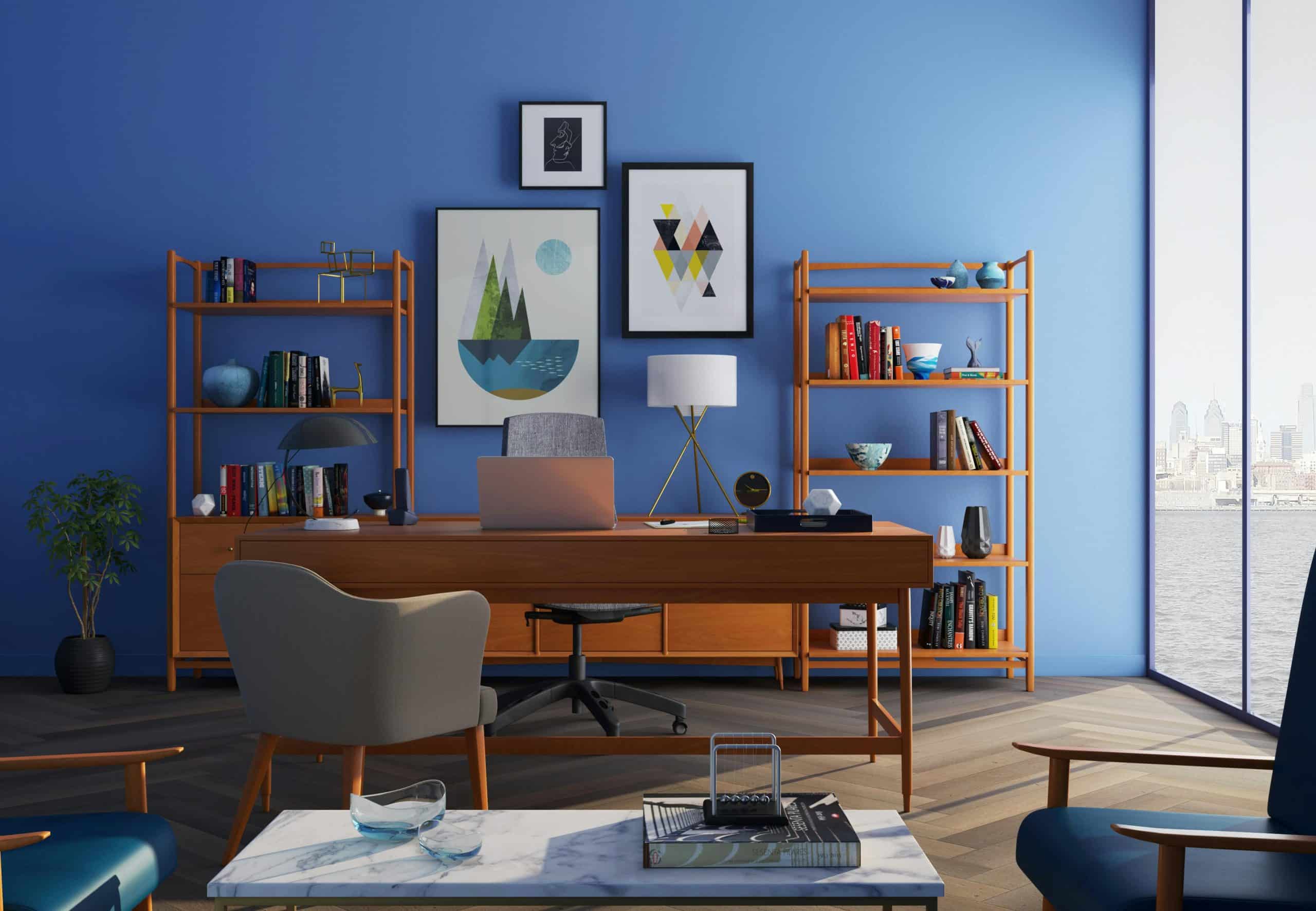How can you use old English architectural elements in a UK modern office space?

Architectural design has seen numerous styles over centuries. As the world moves towards practical and minimalistic designs, we notice a pattern where designers seamlessly blend old and modern styles to create a unique aesthetic appeal. This hybrid design approach is especially popular in the UK, where old English architectural elements can be seen peppered into modern office spaces. This has led to a new wave of architectural design that advocates for repurposing and recycling older, traditional elements into a contemporary setting.
Incorporating old English architectural elements in modern office design
The essence of old English architecture lies in its detailed ornamentation, strong lines, and robust structure. Each room in traditional English houses was crafted with a unique identity, and that's what modern architects are aiming to bring back to the office spaces. Whether it's the brickwork, the framework, or the overall design, each element brings a sense of history and character to a space.
Cela peut vous intéresser : What are the most practical features for a UK dog-friendly backyard?
One popular old English architectural element is the fireplace. It was a common feature in traditional English homes and public buildings. Today, architects are cleverly incorporating this element into modern office design to create a cozy, homely feel in a professional environment. A faux fireplace or mantelpiece can act as a focal point in a meeting room or lounge area, creating a comfortable and welcoming space for employees and clients.
The use of wooden beams is another popular choice among architects. In old English buildings, wooden beams were often left exposed, adding a rustic, rugged charm to the space. In a modern office design, these beams can be used to enhance the ceiling, adding depth and character to the room.
A lire également : What is the best way to set up a vertical hydroponic garden in a UK apartment?
Repurposing old English furniture is another way to bring a vintage charm to modern office spaces. Antique tables, chairs, and cabinets can be repurposed and used as functional pieces in the office.
The influence of London on modern architectural designs
London is a city that beautifully combines historical grandeur with modern sophistication. Its architectural landscape is a melting pot of styles, combining Victorian, Georgian, and modern designs cohesively. The influence of London's architectural style can be seen in many modern office buildings across the UK, where architects incorporate elements of old English architecture into contemporary designs.
The iconic London brick is a signature element in English architecture. In modern office buildings, architects are using this London brick to create stylish, urban interiors. Whether it's for a feature wall or an entire room, the London brick adds an old-world charm to the modern office space.
Another popular architectural element from London is the bay window. Originally designed for Victorian homes, bay windows are now a popular feature in modern buildings. In an office setting, a bay window can create a natural, light-filled space, perfect for informal meetings or relaxation areas.
Creating a hybrid style: Mixing old and new architectural elements
Creating a hybrid style by mixing old and new architectural elements is at the heart of this design trend. It involves carefully selecting and integrating elements from different architectural styles to create a space that is both unique and functional.
One approach is to incorporate old English architectural accents against a modern, minimalist backdrop. For instance, a room dominated by sleek glass walls and minimalistic furniture can be complemented by an antique wooden table, or a traditional English fireplace. This creates a striking contrast, blending the old with the new, and adding depth and personality to the space.
Alternatively, the traditional English architectural elements can form the core design, with modern accents added for functionality and convenience. For example, a room with classic Victorian brickwork and wooden beams can feature modern lighting fixtures and office equipment.
The importance of the architect in blending styles
Blending old English architectural elements with modern office design is not a simple task. It requires an eye for detail, a deep understanding of both traditional and contemporary architectural styles, and the ability to envision a space that is both functional and aesthetically pleasing. This is where the role of the architect becomes crucial.
An architect can analyze the space, identify the potential of different architectural elements, and propose a design that ensures a seamless blend of the old and new. They can also advise on the preservation and repurposing of antique elements, ensuring they are integrated into the design without compromising their original character.
In conclusion, the trend of blending old English architectural elements with modern office design is creating unique and inspiring spaces. These buildings are more than just office spaces; they are a testament to the rich architectural history of the UK and a celebration of its evolution over the centuries. This architectural trend is not only about creating aesthetically pleasing spaces but also about preserving the legacy of traditional English architecture for future generations.
Adding the English Touch with Arts and Crafts Furniture Style
When it comes to combining old English architectural elements with modern office design, the arts and crafts movement plays a significant role. Originating over 100 years ago, this movement is known for its emphasis on traditional craftsmanship, simple forms, and the use of natural materials. The furniture from this period, often featuring robust woodwork and intricate detailing, can add a classic touch to any modern office space.
Incorporating arts and crafts furniture pieces into a modern office setting can give it a unique blend of old and new. For instance, using a traditional arts and crafts desk in an otherwise sleek and modern office can create a striking contrast that's visually appealing. This could be complemented with modern elements like a glass partition or a contemporary rug to create a harmonious blend of the old and new.
Moreover, elements such as leaded glass, which were popular during the arts and crafts movement, could be incorporated into modern office design for added charm and character. For example, a partition made of leaded glass can serve as a room divider while adding an element of the old English style to the space.
The use of arts and crafts furniture is not just about aesthetics; it also serves practical purposes. The robust and sturdy nature of these pieces makes them suitable for daily use in a busy office environment. Moreover, repurposing these antique pieces aligns with the modern trend of sustainability and environmental conservation.
Pinterest photos can serve as great inspiration for incorporating arts and crafts furniture into your office design. From an old-century table repurposed as a work desk to an antique cabinet used for storage, these images can provide you with plenty of creative ideas.
A Trip Down Memory Lane with Gothic and Greek Revival
Gothic and Greek Revival are two architectural styles that have left a significant impact on English architecture over the centuries. Gothic design, known for its pointed arches, ribbed vaults, and flying buttresses, can add a dramatic touch to any modern office space. On the other hand, Greek Revival, characterized by stout columns and elaborate friezes, can lend an aura of grandeur and elegance to a modern setting.
When it comes to incorporating these architectural styles into a modern office design, subtlety is key. For instance, you can use pointed arches from Gothic architecture in doorways or windows, or incorporate Greek Revival columns as part of the structural design.
A great way to incorporate these styles is by using them in specific areas like the reception or conference room. For instance, a conference room designed with Gothic architecture can create a powerful and dramatic atmosphere, perfect for important meetings and discussions. Meanwhile, a reception area designed with Greek Revival elements can create a grand and welcoming first impression.
You can also take inspiration from the National Trust, which has preserved many buildings of these architectural styles. Their detailed preservation work can provide excellent ideas on how to incorporate Gothic or Greek Revival elements into your modern office design.
Interior designers have a crucial role to play in this integration process. Their expertise in architectural design and knowledge of these historic architectural styles ensures these elements are incorporated seamlessly, creating a visually pleasing and functional space.
Conclusion
Incorporating old English architectural elements into modern office design is a creative way to pay homage to the architectural history of the UK. Whether it's the use of arts and crafts furniture, Gothic and Greek Revival architectural elements, or traditional English fireplaces, these elements can bring a unique aesthetic appeal to any office space.
Moreover, integrating these elements is not just about creating visually pleasing spaces. It's also about sustainability and preserving the architectural heritage of the UK. By repurposing and reusing these elements, we can reduce waste and promote a more sustainable approach to architecture design.
In this modern era of architecture, the blend of old and new is a testament to the timelessness of traditional English architecture and its ability to adapt and evolve. As we move forward, this unique blend of styles is set to continue guiding the future of architectural design in the UK.
